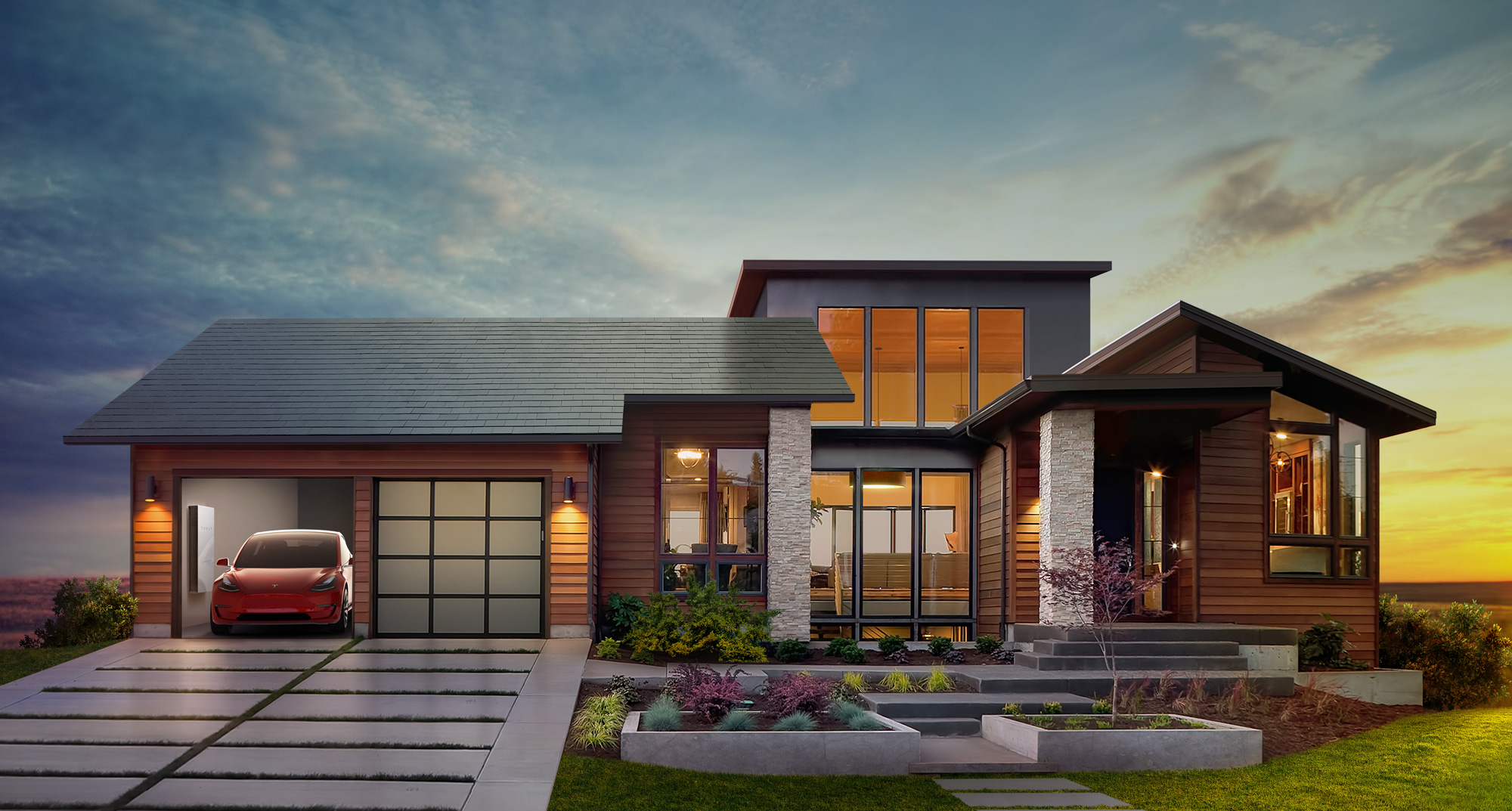
Shareholders on November 17 will vote on whether or not to approve Tesla’s $2.6 billion all-stock offer to purchase SolarCity. In the lead-up to the vote, Tesla CEO Elon Musk – who also happens to be the chairman of SolarCity – is doing everything in his power to persuade voters to approve the acquisition.
At a recent event held on the Universal Studios lot in Los Angeles, Musk unveiled a line of textured glass tiles with built-in solar cells designed to replace traditional shingles on a home’s roof.
The hydrographically-printed panels would be offered in your choice of slate glass tile, textured glass tile, smooth glass tile or Tuscan glass tile – all of which are said to be more durable than roofing materials in use today. The solar cells integrated into the tiles are invisible when viewed from the street but are fully exposed to the sun from above.
Accompanying the solar roof was an updated version of Tesla’s residential battery system, appropriately named the Powerwall 2. The new $5,500 battery system will offer 14kWh of storage which, according to Musk, is enough to power a typical four-bedroom home for a day.

Musk didn’t mention how much the solar roof would cost consumers, even when asked by journalists after the event. He did, however, concede that it would not make sense for someone to replace a brand new roof with a solar roof. In the event that your existing roof needs replacing, however, it could make sense for many families.
Announcing the new products ahead of the shareholder vote on the merger is absolutely a strategic move. As Ars Technica notes, Musk said that if the merger isn’t approved, collaborating with SolarCity on the roof panels would make far less sense.
https://www.techspot.com/news/66856-tesla-announces-plans-solar-roof-second-gen-residential.html